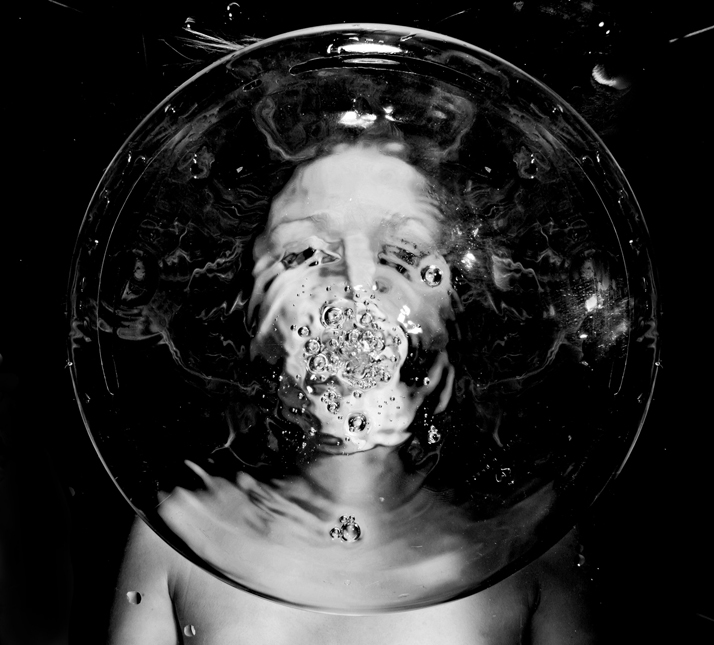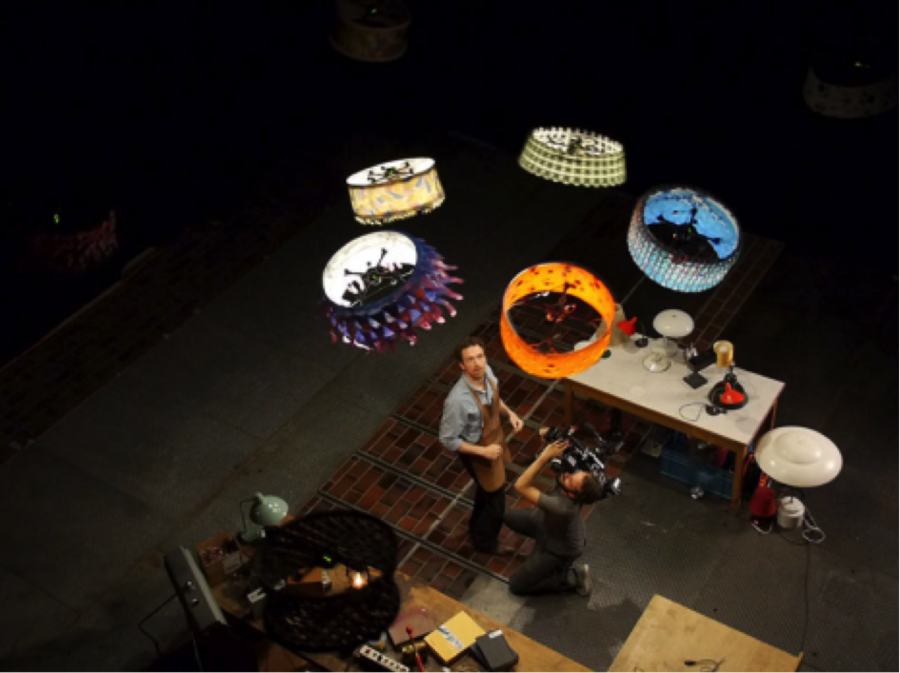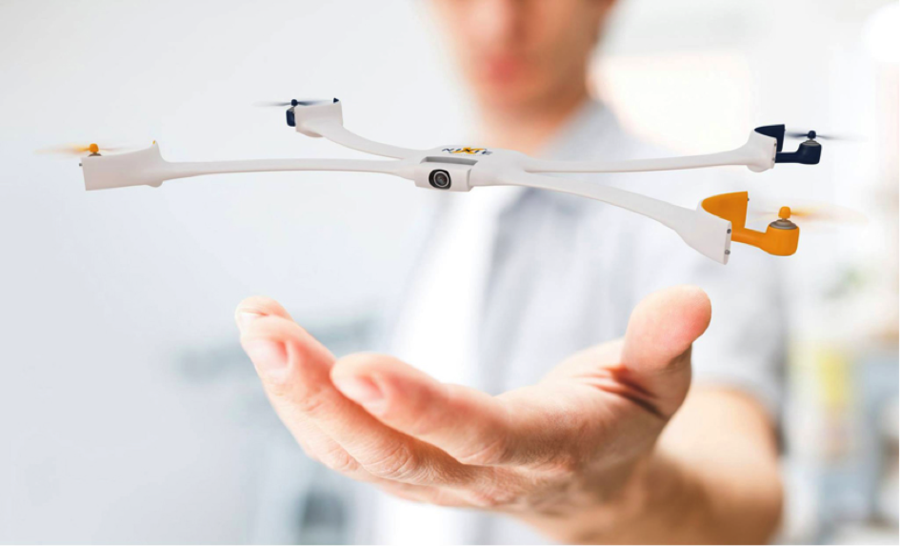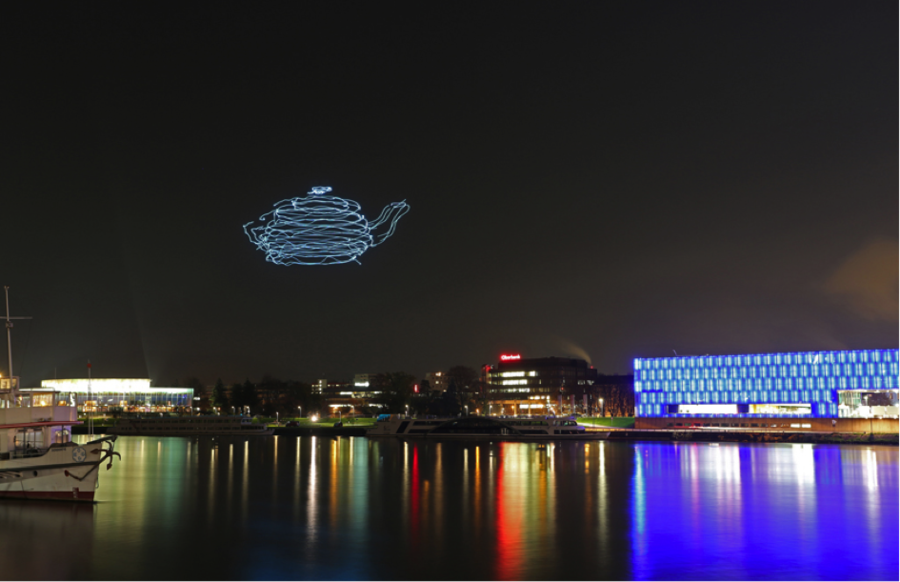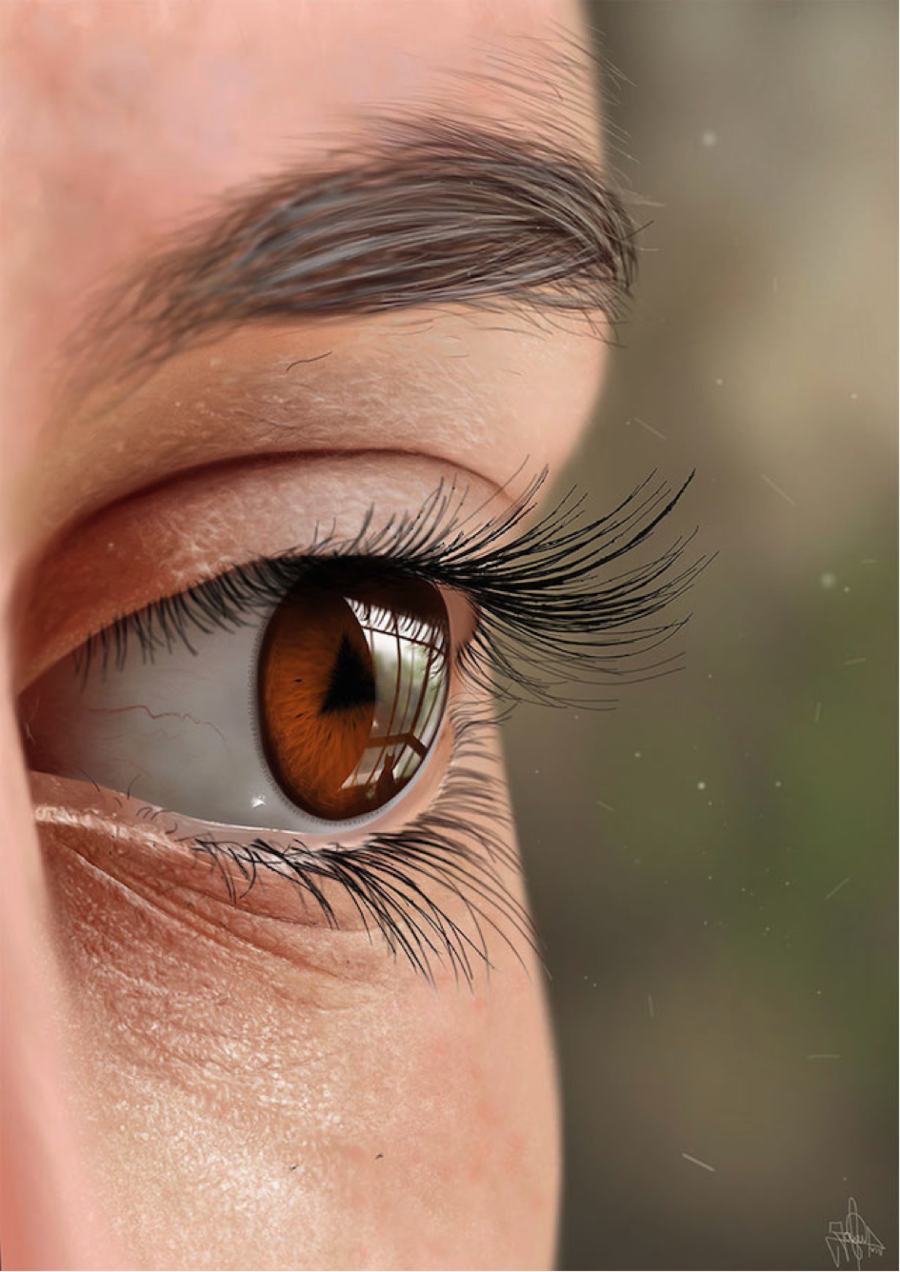Difference between revisions of "Leslie Page"
(Created page with "TEST") |
|||
| Line 1: | Line 1: | ||
| − | + | ||
| + | == ABOUT ME == | ||
| + | |||
| + | == UNRAVEL THE CODE == | ||
| + | |||
| + | === Examples of how contemporary technology influenced our body, mind, behavior and our network. === | ||
| + | |||
| + | ==== ''' PIECE OF MY MIND by Flóra Borsi’s ''' ==== | ||
| + | |||
| + | [[File:5-Flora-Borsi-Pieces-Of-My-Mind-exhibition-art350-istanbul-yatzer.jpg]] | ||
| + | |||
| + | In our digital age, images are regularly manipulated beyond recognition, whether it be in the form of a picture that's been re-worked to shock and go viral, or fashion photography molded to meet modern perceptions of what constitutes beauty. Usually however, commercially driven uses of image manipulation are not always perceived as having particularly positive objectives. That said, the results of this evolving practice are often impressive if viewed on a purely aesthetic or skill based level. Manipulated images such as these have proved to be most confounding in the hands of talented young artist Flóra Borsi, a graduate of the Moholy-Nagy University of Art and Design in Budapest. In manipulating images to explore beyond the physical, she looks at replication, perceptions, identity, emotions and consciousness by working an image beyond expectations and raw form. | ||
| + | |||
| + | ==== ''' SPARKED: Cirque du Soleil drones’ human interactive performance in collaboration with researchers of ETH Zurich ''' ==== | ||
| + | |||
| + | [[File:SPARKED.png]] | ||
| + | |||
| + | Cirque du soleil drones demonstrate the interaction capabilities between humans and machines in a dynamic performance. A floating group of computer controlled gadgets were shot as a short film and took place in the flying machine arena at ETH zurich. the visuals are real, meaning no CGI, wires or slow-moment were used to enhance the clip. | ||
| + | |||
| + | |||
| + | ==== ''' THE ‘NIXIE’ QUADCOPTER DRONE by Fly Nixie ''' ==== | ||
| + | |||
| + | [[File:NIXIE.png]] | ||
| + | |||
| + | It is the first wearable camera as it fits around your wrist and is one of the finalists for intel’s make it wearable challenge. It has a tiny, rotating Polaroid in its middle body that captures active pictures of the user from unique angles and positions. When not in use, the gadget acts similarly to a bracelet by fixing around you wrist so that it is safe and easily accessible to the wearer. When transforming for operation, the straps divide and unfold to create a quadcopter that flies, takes photos and videos, then comes back to you. The ‘nixie’ is still in development but is a finalist for the intel competition which aims to challenge designers to change the future of wearable technology. | ||
| + | |||
| + | |||
| + | ==== ''' SMART ATOMS SPAXELS by Ars Electronica ''' ==== | ||
| + | |||
| + | [[File:SMARTOBJECT.png]] | ||
| + | |||
| + | The ‘Smart Atoms’ spaxels version, developed by Ars Electronica Futurelab, use these space pixels to fly in precise formation in order to draw three-dimensional objects in midair. The LED-equipped quadcopters fly as interlinked blocks so that it is possible to not only form visual likenesses but also to generate images with material-virtual characteristics. ‘Smart Atoms’ deals with the question of where the limits of human perception are located. In concrete terms: what type of swarm behavior by these quadcopters causes spectators to perceive the swarm as a single entity, as an object. Where exactly is the perceptual dividing line between “I’m interacting with many individual objects” and “I’m interacting with an object consisting of numerous parts”? and which interaction strategies and metaphors emerge from this?’ said horst hörtner, directer or ars electronica futurelab. | ||
| + | |||
| + | ==== ''' THE EVOLUTION OF THE DESK by Harvard Innovation Lab ''' ==== | ||
| + | |||
| + | [[File:EVOLUTIONDESK.png.png]] | ||
| + | |||
| + | The past 35 years has seen the transformation of the everyday things that surround us traverse from tangible to virtual. A digital app exists for everything from world mapping to paying bills, completely recontextualizing the tools we use in the workplace. A team at the Harvard Innovation Lab has encapsulated this history of technology, as it relates to the office, in a video, ‘The evolution of the desk‘, demonstrating the steep shift from cork boards and fax machines to pinterest and PDFs. | ||
| + | ‘We wondered what it would be like to recreate the desktop from the 1980′s and then emulate its transformation through the computer age.‘ The team explain: ‘We wanted to illustrate how technology has changed our world, un-cluttering our desks and simplifying our lives. While gradual change from year to year is often hard to perceive, a longer snapshot gives us a much more dramatic view of the technological progression we have experienced. While some argue that technology has made our lives more complex, the video below demonstrates the current clarity from clutter, and the ways in which technology encourages productive and social behavior.’ | ||
| + | Interesting reaction: | ||
| + | What a boring, desolate place this 2014 space is. The eye is not meant to focus at one distance all day. Things on walls and desks communicate personality and belonging. A seemingly cluttered environment can foster creativity. As I write this, I am on my fast, small computer. But my desk is also covered by toys, water cups, pill bottles, scraps of paper torn from magazines, notes scribbled on legal pads, a wallet, business cards. Analog calendars and clocks help me visualize the time in a real context. A picture that inspires me does not blink off. | ||
| + | |||
| + | |||
| + | ==== ''' HYPER-REALISTIC PAINTINGS WITH iPAD by Jaime Sanjuan Ocabo ''' ==== | ||
| + | |||
| + | [[File: PAINTING.png]] | ||
| + | |||
| + | The Spanish artist Jaime Sanjuan Ocabo uses his iPad to realize these incredible paintings. By using a sketches application, the artist draws and apply the color with his finger. | ||
| + | |||
| + | |||
| + | ==== ''' MUSIC VIDEO LUX 004 by Simon Weiss and Stephan van den Brink ''' ==== | ||
| + | |||
| + | [[File: PAINTING.png]] | ||
| + | |||
| + | The music video for Simon Weiss is all about joining different aspects of Stephan van den Brink creative interests. In experimenting with installation art, materials, technology and combining different techniques, he pushed towards an image that melts into one with the raw, industrial and ‘imperfect’ sound of the music. | ||
| + | |||
| + | ==== ''' JETPACK PROJECT by ASU Student Jason Kerestes ''' ==== | ||
| + | |||
| + | Jason Kerestes, a student at Arizona State University (ASU) has created the ’4 minute mile’. A wearable jetpack that enhances the runner’s speed and agility. A prototype has been built and is being tested in order to refine its design, with the aim to make it as effective as possible. Its extent of usage possibilities could range from sports to military as it would improve athletes’ speeds as well as soldiers’. | ||
| + | |||
| + | ==== ''' THE AURA SMART SLEEP TRACKING SYSTEM by Withings ''' ==== | ||
| + | |||
| + | Aura, the state-of-the-art sleep tracking unit by Withings is a well thought-out active system designed to help both monitor, and improve sleep quality. The intelligent technology combines a contact-free sleep sensor tucked under the mattress, an active light & sound bedside device, and a smartphone app. Unlike the sense sleep tracker, the device offers dedicated sleep and wake-up programs with light and sound have been designed to provide a stress-free wake-up experience. | ||
| + | |||
| + | ==== ''' THE ‘LEIF’ ESNOWBOARD by Leiftech ''' ==== | ||
| + | |||
| + | It enables skaters to carve up the pavement as if they were sliding down mountain slopes. The unique, electric skateboard captures the feeling of going down a fresh snow run and operates to the same body movements. This allows the riders to lean into turns for big glides, to break and to stop completely, However it has no mechanical brake system as it halts in a similar and intuitive fashion to snowboarding. This recreational transport device can add excitement to your daily commute to and from work or school. | ||
| + | |||
| + | ==== ''' FORTIS EXOSKELETON by Lockheed Martin ''' ==== | ||
| + | |||
| + | The unpowered, lightweight ‘Fortis Exoskeleton’ by Lockheed Martin, is being tested by the U.S navy in order to evaluate the benefits of using them for SEAL use. The devices increase an operator’s strength and endurance by transferring the weight of heavy loads from the user’s body directly to the ground. This allows them to use hefty tools as if they were weightless which thus aids workers in the physically demanding shipyard environment. The ergonomic design moves naturally with the figure and provides strength, endurance and flexibility to the wearer. The equipois zerog arm technology increases productivity by reducing muscles fatigue and preventing injuries as it enables the handler to effortlessly hold objects up to 36 pounds. | ||
| + | |||
| + | ==== ''' THE TECH POLO by Ralph Lauren ''' ==== | ||
| + | |||
| + | The Ralph Lauren ‘Tech Polo’ is a high performance, fashion-forward smart shirt that delivers active biometrics through a worn garment. It was produced along side the Canadian company OMsignal whose team of neuroscience, sports medicine and engineering experts have together created a top which itself is the sensor. The wearer’s data is collected by monitors knitted into the product to read biological and physiological information. Captured intelligence such as, movement, direction, heartbeat, respiration, stress levels and energy output are stored by a ‘black box’ and transmitted to your smart devices via the cloud. | ||
| + | |||
| + | ==== ''' CHAIRLESS CHAIR by Noonee ''' ==== | ||
| + | |||
| + | The wearable ergonomic device ‘Chairless Chair’ by Noonee decreases the chances of injuries as workers are enabled to rest their legs for sitting and whilst moving. Its design is based upon robotic principles for bio-inspired legged locomotion and actuation, and also by the theorem of passive dynamics research. This patent-pending technology overcomes the weight and power constraints of worn mechatronic systems to provide posture support in environments that lack the space to install chairs. In such workplaces, the amount of repetitive movement injuries and levels of fatigue are lowered resulting in an increase in efficient and quality productivity. | ||
| + | |||
| + | ==== ''' OMOTE by Nobymichi Asai ''' ==== | ||
| + | |||
| + | Like something straight out of a sci-fi film, CGI expert Nobumichi Asai and a team of creative developers and directors developed ‘Omote’, a real-time face tracking & projection installation. Using state-of-the-art technology, the visual mapping concept transforms a model’s face into mesmerizing patterns with an electronic equivalent of make-up. In the initial stages of the process, a 3D laser scans and creates a three dimensional facial replica with pin-point accuracy, complete with detailed surfaces and contours. A selection of animated graphics are then layered on the face and manipulated by the artist in real-time. | ||
| + | |||
| + | ==== ''' FARADAY CAGE DRESS by Anouk Wipprecht and Arcattack ''' ==== | ||
| + | |||
| + | Anouk Wipprecht and Arcattack have collaboratively created a wearable ‘faraday cage dress’ that discharges one million volts of electricity. Displayed at the maker faire bay area 2014 show, two custom engineered tesla coils that can send electrical arcs up to twelve feet long, were employed to demonstrate the garment’s ability. Product testing lead to many modifications that highlighted how ‘form follows function’ was incorporated as safety for this project, was imperative. With each coil being able to release a peak of half a million volts, it was crucial that the dress and more importantly, the helmet could cope and function with such a high intensity. The faraday cage was constructed using 94 waterjet cut, metal panels and then bound together with over 600 rings. Two 6 inch diameter nitrogen-filled plasma balls were fitted in to the shoulder-pieces, to glow bright purple when electrified by the tesla coils. Thanks to the testing and modifying of her designs, Anouk Wipprecht was able to show maker faire how to get struck by lightning whilst looking fashionable. | ||
Revision as of 07:18, 3 October 2014
Contents
- 1 ABOUT ME
- 2 UNRAVEL THE CODE
- 2.1 Examples of how contemporary technology influenced our body, mind, behavior and our network.
- 2.1.1 PIECE OF MY MIND by Flóra Borsi’s
- 2.1.2 SPARKED: Cirque du Soleil drones’ human interactive performance in collaboration with researchers of ETH Zurich
- 2.1.3 THE ‘NIXIE’ QUADCOPTER DRONE by Fly Nixie
- 2.1.4 SMART ATOMS SPAXELS by Ars Electronica
- 2.1.5 THE EVOLUTION OF THE DESK by Harvard Innovation Lab
- 2.1.6 HYPER-REALISTIC PAINTINGS WITH iPAD by Jaime Sanjuan Ocabo
- 2.1.7 MUSIC VIDEO LUX 004 by Simon Weiss and Stephan van den Brink
- 2.1.8 JETPACK PROJECT by ASU Student Jason Kerestes
- 2.1.9 THE AURA SMART SLEEP TRACKING SYSTEM by Withings
- 2.1.10 THE ‘LEIF’ ESNOWBOARD by Leiftech
- 2.1.11 FORTIS EXOSKELETON by Lockheed Martin
- 2.1.12 THE TECH POLO by Ralph Lauren
- 2.1.13 CHAIRLESS CHAIR by Noonee
- 2.1.14 OMOTE by Nobymichi Asai
- 2.1.15 FARADAY CAGE DRESS by Anouk Wipprecht and Arcattack
- 2.1 Examples of how contemporary technology influenced our body, mind, behavior and our network.
ABOUT ME
UNRAVEL THE CODE
Examples of how contemporary technology influenced our body, mind, behavior and our network.
PIECE OF MY MIND by Flóra Borsi’s
In our digital age, images are regularly manipulated beyond recognition, whether it be in the form of a picture that's been re-worked to shock and go viral, or fashion photography molded to meet modern perceptions of what constitutes beauty. Usually however, commercially driven uses of image manipulation are not always perceived as having particularly positive objectives. That said, the results of this evolving practice are often impressive if viewed on a purely aesthetic or skill based level. Manipulated images such as these have proved to be most confounding in the hands of talented young artist Flóra Borsi, a graduate of the Moholy-Nagy University of Art and Design in Budapest. In manipulating images to explore beyond the physical, she looks at replication, perceptions, identity, emotions and consciousness by working an image beyond expectations and raw form.
SPARKED: Cirque du Soleil drones’ human interactive performance in collaboration with researchers of ETH Zurich
Cirque du soleil drones demonstrate the interaction capabilities between humans and machines in a dynamic performance. A floating group of computer controlled gadgets were shot as a short film and took place in the flying machine arena at ETH zurich. the visuals are real, meaning no CGI, wires or slow-moment were used to enhance the clip.
THE ‘NIXIE’ QUADCOPTER DRONE by Fly Nixie
It is the first wearable camera as it fits around your wrist and is one of the finalists for intel’s make it wearable challenge. It has a tiny, rotating Polaroid in its middle body that captures active pictures of the user from unique angles and positions. When not in use, the gadget acts similarly to a bracelet by fixing around you wrist so that it is safe and easily accessible to the wearer. When transforming for operation, the straps divide and unfold to create a quadcopter that flies, takes photos and videos, then comes back to you. The ‘nixie’ is still in development but is a finalist for the intel competition which aims to challenge designers to change the future of wearable technology.
SMART ATOMS SPAXELS by Ars Electronica
The ‘Smart Atoms’ spaxels version, developed by Ars Electronica Futurelab, use these space pixels to fly in precise formation in order to draw three-dimensional objects in midair. The LED-equipped quadcopters fly as interlinked blocks so that it is possible to not only form visual likenesses but also to generate images with material-virtual characteristics. ‘Smart Atoms’ deals with the question of where the limits of human perception are located. In concrete terms: what type of swarm behavior by these quadcopters causes spectators to perceive the swarm as a single entity, as an object. Where exactly is the perceptual dividing line between “I’m interacting with many individual objects” and “I’m interacting with an object consisting of numerous parts”? and which interaction strategies and metaphors emerge from this?’ said horst hörtner, directer or ars electronica futurelab.
THE EVOLUTION OF THE DESK by Harvard Innovation Lab
The past 35 years has seen the transformation of the everyday things that surround us traverse from tangible to virtual. A digital app exists for everything from world mapping to paying bills, completely recontextualizing the tools we use in the workplace. A team at the Harvard Innovation Lab has encapsulated this history of technology, as it relates to the office, in a video, ‘The evolution of the desk‘, demonstrating the steep shift from cork boards and fax machines to pinterest and PDFs. ‘We wondered what it would be like to recreate the desktop from the 1980′s and then emulate its transformation through the computer age.‘ The team explain: ‘We wanted to illustrate how technology has changed our world, un-cluttering our desks and simplifying our lives. While gradual change from year to year is often hard to perceive, a longer snapshot gives us a much more dramatic view of the technological progression we have experienced. While some argue that technology has made our lives more complex, the video below demonstrates the current clarity from clutter, and the ways in which technology encourages productive and social behavior.’ Interesting reaction: What a boring, desolate place this 2014 space is. The eye is not meant to focus at one distance all day. Things on walls and desks communicate personality and belonging. A seemingly cluttered environment can foster creativity. As I write this, I am on my fast, small computer. But my desk is also covered by toys, water cups, pill bottles, scraps of paper torn from magazines, notes scribbled on legal pads, a wallet, business cards. Analog calendars and clocks help me visualize the time in a real context. A picture that inspires me does not blink off.
HYPER-REALISTIC PAINTINGS WITH iPAD by Jaime Sanjuan Ocabo
The Spanish artist Jaime Sanjuan Ocabo uses his iPad to realize these incredible paintings. By using a sketches application, the artist draws and apply the color with his finger.
MUSIC VIDEO LUX 004 by Simon Weiss and Stephan van den Brink
The music video for Simon Weiss is all about joining different aspects of Stephan van den Brink creative interests. In experimenting with installation art, materials, technology and combining different techniques, he pushed towards an image that melts into one with the raw, industrial and ‘imperfect’ sound of the music.
JETPACK PROJECT by ASU Student Jason Kerestes
Jason Kerestes, a student at Arizona State University (ASU) has created the ’4 minute mile’. A wearable jetpack that enhances the runner’s speed and agility. A prototype has been built and is being tested in order to refine its design, with the aim to make it as effective as possible. Its extent of usage possibilities could range from sports to military as it would improve athletes’ speeds as well as soldiers’.
THE AURA SMART SLEEP TRACKING SYSTEM by Withings
Aura, the state-of-the-art sleep tracking unit by Withings is a well thought-out active system designed to help both monitor, and improve sleep quality. The intelligent technology combines a contact-free sleep sensor tucked under the mattress, an active light & sound bedside device, and a smartphone app. Unlike the sense sleep tracker, the device offers dedicated sleep and wake-up programs with light and sound have been designed to provide a stress-free wake-up experience.
THE ‘LEIF’ ESNOWBOARD by Leiftech
It enables skaters to carve up the pavement as if they were sliding down mountain slopes. The unique, electric skateboard captures the feeling of going down a fresh snow run and operates to the same body movements. This allows the riders to lean into turns for big glides, to break and to stop completely, However it has no mechanical brake system as it halts in a similar and intuitive fashion to snowboarding. This recreational transport device can add excitement to your daily commute to and from work or school.
FORTIS EXOSKELETON by Lockheed Martin
The unpowered, lightweight ‘Fortis Exoskeleton’ by Lockheed Martin, is being tested by the U.S navy in order to evaluate the benefits of using them for SEAL use. The devices increase an operator’s strength and endurance by transferring the weight of heavy loads from the user’s body directly to the ground. This allows them to use hefty tools as if they were weightless which thus aids workers in the physically demanding shipyard environment. The ergonomic design moves naturally with the figure and provides strength, endurance and flexibility to the wearer. The equipois zerog arm technology increases productivity by reducing muscles fatigue and preventing injuries as it enables the handler to effortlessly hold objects up to 36 pounds.
THE TECH POLO by Ralph Lauren
The Ralph Lauren ‘Tech Polo’ is a high performance, fashion-forward smart shirt that delivers active biometrics through a worn garment. It was produced along side the Canadian company OMsignal whose team of neuroscience, sports medicine and engineering experts have together created a top which itself is the sensor. The wearer’s data is collected by monitors knitted into the product to read biological and physiological information. Captured intelligence such as, movement, direction, heartbeat, respiration, stress levels and energy output are stored by a ‘black box’ and transmitted to your smart devices via the cloud.
CHAIRLESS CHAIR by Noonee
The wearable ergonomic device ‘Chairless Chair’ by Noonee decreases the chances of injuries as workers are enabled to rest their legs for sitting and whilst moving. Its design is based upon robotic principles for bio-inspired legged locomotion and actuation, and also by the theorem of passive dynamics research. This patent-pending technology overcomes the weight and power constraints of worn mechatronic systems to provide posture support in environments that lack the space to install chairs. In such workplaces, the amount of repetitive movement injuries and levels of fatigue are lowered resulting in an increase in efficient and quality productivity.
OMOTE by Nobymichi Asai
Like something straight out of a sci-fi film, CGI expert Nobumichi Asai and a team of creative developers and directors developed ‘Omote’, a real-time face tracking & projection installation. Using state-of-the-art technology, the visual mapping concept transforms a model’s face into mesmerizing patterns with an electronic equivalent of make-up. In the initial stages of the process, a 3D laser scans and creates a three dimensional facial replica with pin-point accuracy, complete with detailed surfaces and contours. A selection of animated graphics are then layered on the face and manipulated by the artist in real-time.
FARADAY CAGE DRESS by Anouk Wipprecht and Arcattack
Anouk Wipprecht and Arcattack have collaboratively created a wearable ‘faraday cage dress’ that discharges one million volts of electricity. Displayed at the maker faire bay area 2014 show, two custom engineered tesla coils that can send electrical arcs up to twelve feet long, were employed to demonstrate the garment’s ability. Product testing lead to many modifications that highlighted how ‘form follows function’ was incorporated as safety for this project, was imperative. With each coil being able to release a peak of half a million volts, it was crucial that the dress and more importantly, the helmet could cope and function with such a high intensity. The faraday cage was constructed using 94 waterjet cut, metal panels and then bound together with over 600 rings. Two 6 inch diameter nitrogen-filled plasma balls were fitted in to the shoulder-pieces, to glow bright purple when electrified by the tesla coils. Thanks to the testing and modifying of her designs, Anouk Wipprecht was able to show maker faire how to get struck by lightning whilst looking fashionable.
